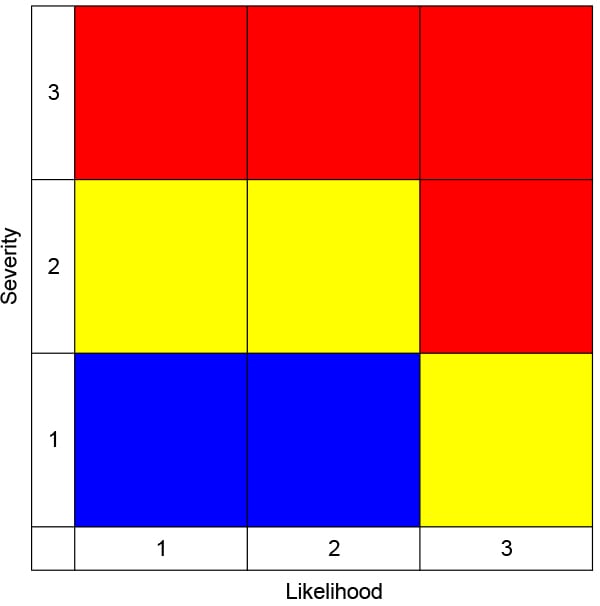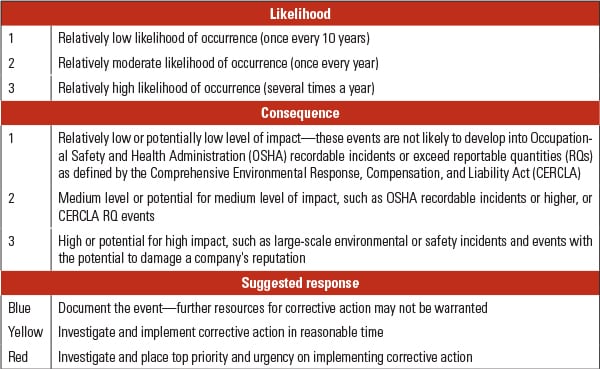Broadly put, today’s power plant operations are a mix of automated operations and manual or procedural steps. A plant may have hundreds of control loops, interlocks, permissives, and safety systems. In addition, there are procedural steps, which rely on operator interaction, such as opening or closing a valve, slow rolling a turbine, or taking grab samples. In view of the large number of operations, it appears reasonable to anticipate that something will go wrong someday.
In those instances when something does go wrong, the result is not always a major incident; sometimes the outcome is just a close call. Management tends to have mixed feelings about these near misses. On the one hand, they breathe a sigh of relief that the result of the incident was not more serious. On the other hand, they worry that their current system may be ill prepared to deal with a similar incident in the future.
Evaluating Near Misses
The causes of unwanted events could be many. Some examples include:
■ Aging plants and control systems
■ Outdated or inadequate procedures
■ Inadequate training
■ Workforce turnover
■ Impact of business climate—divestitures and acquisitions
■ Plant systems inadequately designed for severe weather conditions
Many experts suggest that near-miss incidents are opportunities in disguise. They believe that close calls can be used to prevent future incidents. Most power plants conduct some sort of root-cause investigation after near-miss incidents. Depending on the findings, managers may pursue one of the following courses:
■ Take no action, if the incident was deemed only “minor.”
■ Install additional safeguards to prevent similar incidents in the future, if the incident had the potential to have a major impact.
In many cases, shift leaders, project managers, or groups of in-plant subject matter experts determine subjectively whether an incident is “minor” or “major.” They typically rely on their personal experience to make that decision. This can be a reasonably effective approach for categorization of near-miss incidents; however, in some cases it can lead to inaccurate assessments. The following points may be worth considering relative to the consistent effectiveness of that approach:
■ Often, shift leaders and project managers are under intense pressure to accomplish myriad projects in relatively short timeframes. Time scarcity can result in hasty near-miss classification decisions.
■ The approach is often based solely on the severity or potential severity of an incident. This method frequently fails to evaluate the likelihood of a future incident. For that reason, it is possible that this approach might overlook incidents with a medium level of severity but a high likelihood of occurrence.
The Risk Matrix Approach
A risk matrix technique may offer a more reliable solution. The process uses a semi-quantitative technique to identify near-miss incidents that could become sufficiently severe with unpleasant consequence under a slightly different set of circumstances. The following steps outline how the system works:
1. Evaluate each near-miss incident without haste while remembering that the ultimate goal is to reduce risk to workers, neighbors, and the environment.
2. For a given near-miss incident, estimate and index its likelihood and potential severity (consequence) on the matrix shown in Figure 1, using the criteria described in Table 1.
3. Once risk has been estimated, take appropriate corrective actions to prevent or minimize the recurrence of such an event.
 |
|
1. Risk matrix for near-miss incident management. This matrix can be used to index incidents by severity and likelihood rank (see Table 1). Source: GC Shah |
 |
|
Table 1. Decisions, decisions. This table offers guidance to help categorize the likelihood and consequences of an incident. Source: GC Shah |
The risk matrix approach is analogous to the risk-rank approach often used by power plant personnel or utility workers for process hazard analyses. As a starting point, the approach still relies on the experience and judgment of knowledgeable plant personnel. To achieve excellent long-term results however, focus should be placed on collecting relevant data so that the likelihood and severity of near-miss incidents may be assigned with the help of historical records. In short, the approach is most effective when based on reliable data.
Classifying near-miss incidents into a number of useful categories can also help. For example, consider categories such as flammable/toxic gas leaks, spills, slips and falls, and others. Past frequencies of incidents can be used in the risk matrix approach to identify where limited resources should be directed to provide the most beneficial results.
Ultimately, safety should be part of an organization’s culture, and not simply a collection of procedures to follow. Trust must be developed among workers and between workers and management. However, even in safety-conscious working environments, near misses are likely to occur. From a safety and productivity viewpoint, the goal should be to minimize their frequency and develop systems that help reduce adverse effects if future events occur. Utilizing the risk matrix method can be a useful step in the process.
—G.C. Shah, PE (ghanshyam.shah@woodgroup.com) is a senior advisor for safety, environmental, and industrial hygiene at Wood Group Mustang in Houston, Texas. He holds several professional certifications, including in the fields of safety, fire protection, industrial hygiene, and cybersecurity.
https://www.powermag.com/use-near-miss-incidents-preventive-tool/?pagenum=1